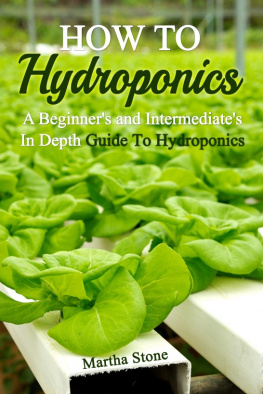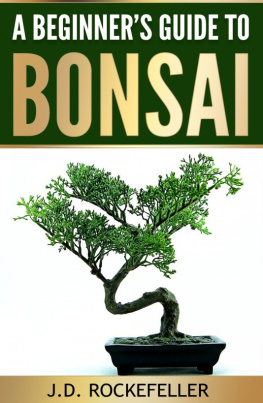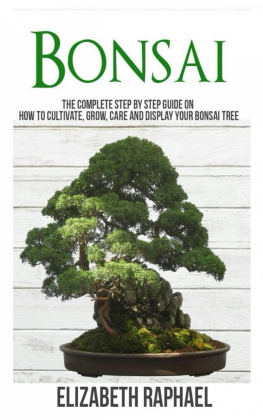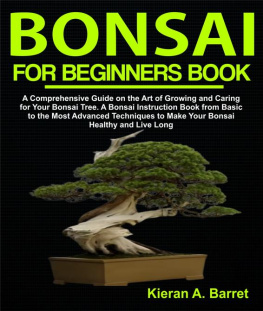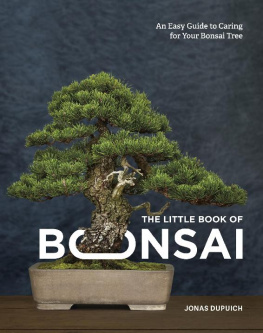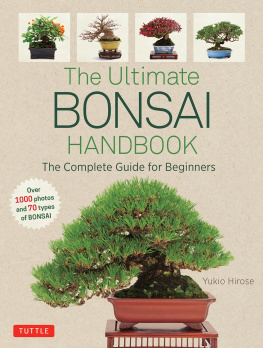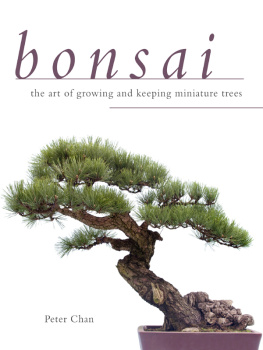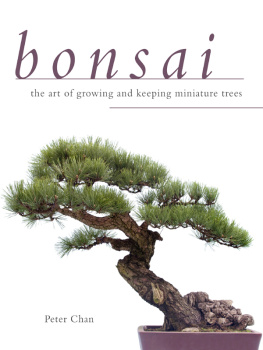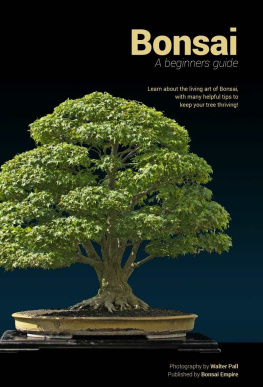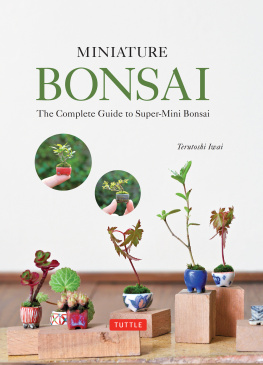Bonsai 101: Mimicking Nature withBonsai Trees
Ultimate Guide to Creating Your OwnBonsai
By Martha Stone
Copyright 2014 MarthaStone
Smashwords Edition
Smashwords Edition,License Notes
This ebook is licensed for your personalenjoyment only. This ebook may not be re-sold or given away toother people. If you would like to share this book with anotherperson, please purchase an additional copy for each recipient. Ifyoure reading this book and did not purchase it, or it was notpurchased for your use only, then please return to your favoriteebook retailer and purchase your own copy. Thank you for respectingthe hard work of this author.
Table of Contents
Chapter 1
Introduction: The Art of Growing Bonsai
Though the practice originated in Japan,bonsai has become a widely accepted and popular hobby, form of artor horticulture activity in different areas of the world. Mosthorticulture experts and enthusiasts would always label asuccessful bonsai as a masterpiece. It was first popularized inAsia several centuries ago but the practice has undeniably remainedstrong today.
In fact, bonsai has already made its mark inthe Western culture. In this modern age, more and more individualsfrom all around the globe are still taking interest in this form ofart. Indeed, more than any other horticultural endeavor, bonsaibears charisma that is not to be undermined.
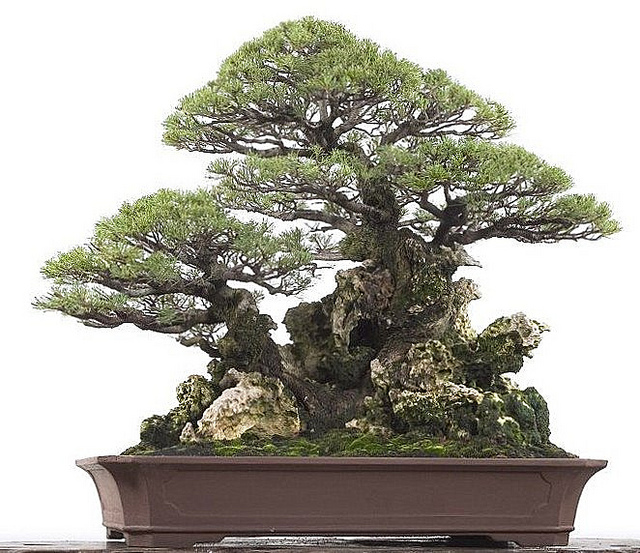
History of Bonsai
A couple of centuries ago, bonsai, thenreferred to as punsai, was first introduced in China. Thispractice of planting single specimen trees in containers or potscould also be attributed to the influence of Japanese Zen Buddhism.Contrary to popular notion, bonsai is different from dwarfed trees.Bonsais are developed from cuttings and branches of young trees orfrom naturally undersized trees. By pruning their branches androots, the height of the bonsai is kept to approximately 2 inchesto 1 meter. Wires are also applied into the branches and trunks toshape the tree into the desired form. The bonsai is considered arepresentation of a separate and individual entity. It should benoted that bonsais are not planted with their roots. Aside from thecontainer and the soil, the bonsai is totally independent.
Bonsais can enjoy an extremely long lifespan,reaching up to hundreds of years. How long the bonsai will live istotally dependent on the care it has been given. It is no longer asurprise that families who share the love and appreciation forbonsais end up passing their valued specimens from one generationto another. Bonsais have become their heirlooms. Through thebonsais, younger generations will get the opportunity to feel thelove and care of those who originally cared for the specimen.
Indeed, the meticulous care that bonsais areshowered with will always be worth honoring. Nevertheless, how longthe bonsais can live actually comes secondary. Most bonsaienthusiasts pay greater importance to the aesthetic effect createdby the plant, its suitability to its container and its health. Inthe eyes of a bonsai artist, these three factors will make up asuccessful bonsai. Other positive features are just icings on topof the cake.
What most people are not aware of is the factthat any tree species could actually be made into a bonsai. If youare searching for suggestions, you can never go wrong with the mosthighly recommended species for bonsai the small leafed varieties.Bonsais are not designed to be an exact replica of nature. However,it is regarded to be a reflection of the artists personalaesthetic philosophy. Any artist is free to integrate hisindividuality into his bonsai. However, the rule of thumb has to befollowed. The resulting look should still remain as natural aspossible. The intervention of human hands should not be easilydetectable. In most instances, you would see bonsais in theoutdoors.
In the earlier ages, bonsais were naturallygrown and cultivated in the wild. Because of their natural exposureto elements, bonsais became a point of interest with the manyadventures and challenges they were witness to. Sadly, the numberof naturally-grown bonsais dropped down as time passed by. To copewith the decreasing availability of natural bonsais, societiesstarted venturing into experimenting with landscape and nurseryplants. Interested individuals started developing means andtechniques to replicate the look of the natural bonsai specimensthrough the trees that were available in the natural habitat.
Growing Bonsai ofToday
As bonsai rose into popularity, it has alsobecome a subject of a debate horticulture vs. art. Some bonsaienthusiasts focused more on the design while others took greaterinterest on the plants overall health. Different folks may havedifferent opinions on this issue but one fact remains true afterall these years bonsai has become deeply embedded in bothfields.
Nowadays, even those who are not actuallyinterested in art or horticulture would find themselves falling inlove with the mystery and depth of a bonsai. Some make thispractice as their hobby. Others even make a profit out of bonsaisby selling or by teaching others on how to make their own. Thepossibilities on how a bonsai could be a part of your life arecountless.
Whether you are a beginner in this practiceor you already have the basics under your belt, you could never gowrong by reading this book. If you are already confident of yourgardening or aesthetic skills, the instructions and principles youwill find in this book may end up challenging what you think youalready know. After all, bonsai is like no other. Once you gethooked into this hobby, it will require you to make an investmentin time. There are lots of things you need to learn so you cansuccessfully grow and take care of your own bonsai ranging frompruning techniques to storage and display parameters.
It will require much patience anddetermination. Mastering the techniques for bonsai is not possiblein an overnight. You may commit a lot of mistakes along the way.The learning curve may not be as smooth as you expect it to be.However, do not let these frustrations get in your way. Continuereading and understanding the techniques and principles this bookhas laid down for you. Then, complement what you have learned fromthis book by applying them in actual. You will never be a master ofanything that you have not tried. Even the bonsai experts whosenames are often cited in magazines and books nowadays also hadtheir own share of blunders. What made them successful in thiscraft now is their persistence to keep on going. Continue learning.Without a doubt, the sight of your well-crafted bonsai masterpiecewill be worth all the efforts you exerted.

Chapter 2
Selecting a Plant to Make into a Bonsai
As mentioned earlier, all trees can actuallybe made into a bonsai. However, some specific features andcharacteristics make certain plants and trees more suitable forthis type of gardening. Additionally, hobbyists who are stillstarting out or understanding this practice could have a shorterlearning curve by choosing the beginner-friendly species over themore difficult ones. Some plants are also more effective thanothers. If you are clueless or confused with the tons of choicesyou have, you could never go wrong by looking at the followingrequisites.
Next page



